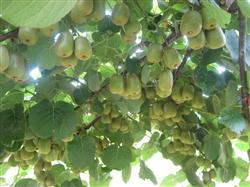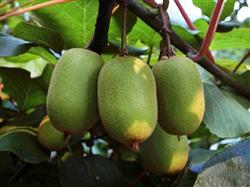Kiwifruit planting techniques: how to prevent and cure kiwifruit chlorosis?

How to prevent and cure kiwifruit chlorosis? Please introduce the control methods of kiwifruit yellowing disease can refer to the following methods to control kiwifruit yellowing disease: the site of the garden is selected, the soil pH value of the production and cultivation garden is between 5.5 and 7.5, the soil is better than light loam, medium loam and sandy loam with good permeability, the content of organic matter in topsoil is more than 1.5%, and the groundwater level is below 1 meter. Avoid planting apples, pears, peaches and other perennial trees in the continuous cropping land and clay soil to build a garden. It is also not allowed to build a garden in areas where the groundwater level is high and stagnant water is easy to occur. Varieties were selected to plant wild delicious kiwifruit with strong yellowing resistance as rootstock and varieties with strong yellowing resistance were selected. High ridge shallow ditch planting according to the tree row cultivation 30 cm high ridge, seepage irrigation is the best, in order to protect the trunk, prevent hardening, rain and waterlogging drainage, no stagnant water, good soil permeability. Interplanting green manure among rows of kiwifruit orchard will cover the tree plate with green manure and other crop straw to preserve soil moisture in order to increase soil humus and improve structure. Soil improvement and deep ripening combined with the application of organic fertilizer can increase the content of soil organic matter and improve soil structure and physical and chemical properties. Rational topdressing and popularizing the technology of balanced fertilization should be based on ammonium nitrogen fertilizer such as ammonium sulfate or urea and less nitrate nitrogen fertilizer and ammonium bicarbonate. The application of iron fertilizer in soil should be mixed with mature organic fertilizer humus fertilizer. To achieve the combined application of nitrogen, phosphorus and potassium, a large number of elements and trace elements. It is suitable to control the yield and increase the yield per mu of trees in the full fruiting stage from 2000kg to 2500kg. Strictly guard against overload to maintain a strong tree posture. It is appropriate to change flood irrigation into small border separate irrigation to avoid excessive irrigation and beware of stagnant water. Seepage irrigation or drip irrigation can be adopted under certain conditions. To adjust the pH of the soil in alkaline soil with pH above 7.5, it is recommended that the plant apply 1 kg of sulfur powder or 8% acetic acid to reduce the pH value of the rhizosphere appropriately. Chemical control of ① for etiolated trees with physiological deficiency caused by pathological factors, root diseases should be cured as soon as possible. On the basis of cutting off the diseased root and scraping the diseased skin, the roots were irrigated alternately with Bordeaux solution for 2 or 3 times. The etiolated trees caused by root-knot nematode disease were treated with ②, the rhizosphere soil was treated with spraying, the root-knot nematodes were killed, and the diseased fibrous roots were cut off to restore the physiological function of the root system as soon as possible. ③ can use hanging drip infusion for the plants that have developed chlorosis. Branch infusion is a simple, fast and practical method for the prevention and treatment of kiwifruit chlorosis. The method is to drill holes at the base of the trunk of the diseased tree to the pith (that is, 1 to 2 of the diameter of the trunk). The amount of nutrient solution is determined according to the thickness and diameter of the trunk. Click to get more kiwifruit planting techniques click to get more fruit planting techniques
- Prev

Kiwifruit planting techniques: what should kiwifruit pay attention to in summer?
What should kiwifruit pay attention to in summer? Please introduce the following points to prevent kiwifruit in summer: anti-wilting kiwifruit leaves wilt during high temperature in summer, there are two main reasons: one is high temperature and drought, which mostly occurs from 12:00 to 4pm on sunny days. Recovery sooner or later, usually occurs in a large area. This is the case.
- Next

Kiwifruit planting technology: why is kiwifruit green?
Why do kiwifruit turn green? Please introduce the reasons and control methods normal kiwifruit peel color should be brown or yellowish brown after ripening, but due to climate and management and other factors, some pericarp is emerald green or turquoise, flavor weakening, quality decline, not resistant to storage. Through comparative analysis, the pen.
Related
- Moge, come on! The staff of the peasant association in the producing area of cantaloupe were frightened when the crowd gathered.
- Causes and Solutions of low Fruit setting rate of Apple
- Symptoms and control measures of passion fruit virus disease
- Fruit growing lesson: how do apple orchards keep high yields?
- Can you build orchards in the mountains? What are the pros and cons?
- How to manage the coloring period of Crisson grape?
- This paper introduces the processing technology of two kinds of fig products.
- How much is a month for retired teachers in rural areas by 2020?
- How can strawberry planting increase sugar content? We should pay attention to management in many aspects.
- What are the cultivation techniques on how to improve the yield of golden fruit?

